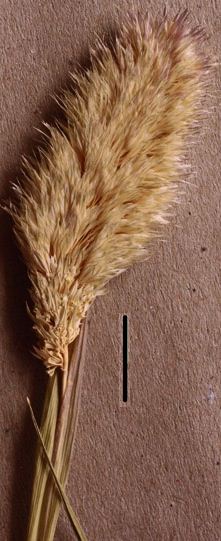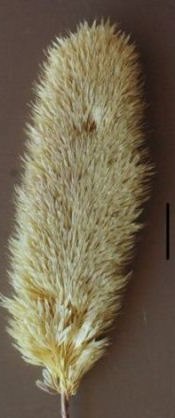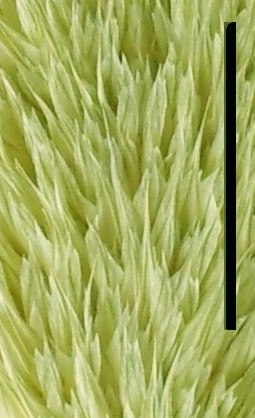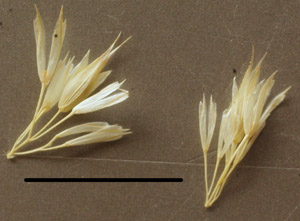Scale bar = 1cm
Paradoxical Canary-grass - introduced (*Phalaris paradoxa)




Native to the Mediterranean region and Europe. Annual. C3.
Family. Poaceae (Grass family).
Identification
- it is an annual
- the flower cluster is dense
- the glumes are longer than the lemmas and are conspicuously flattened to form wings
- the wings are toothed
- the 1st and second lemmas are sterile, the upper fertile
- the leaves flat
- the ligules are membranous 4-10mm long, and becoming torn.
Ways in which Paradoxical Canary-grass differs from Phalaris are that it is an annual, the glumes are prominently toothed near the apex, the flower-stalks are hairy, and the fertile spikelet is surrounded by infertile spikelets. It is lower growing (to about 0.7 metres) and the flower clusters are often oval in shape. It is also less common.
It is an environmental weed.
Name: paradoxus: different, unusual.
Photos 1: Fertile lemma with surrounding sterile lemmas. 2: The glumes are toothed near the summit 3, 4: Oval flower clusters. Pomborneit and Castlemaine.
Lesser Canary-grass (Phalaris minor) also grows locallly. As its name suggests, it is a smaller version of Phalaris. Its flowers are similar, except that the glumes are conspicuously toothed at the top margin.Phalaris (Phalaris aquatica) is has untoothed glumes. It is a perennial.